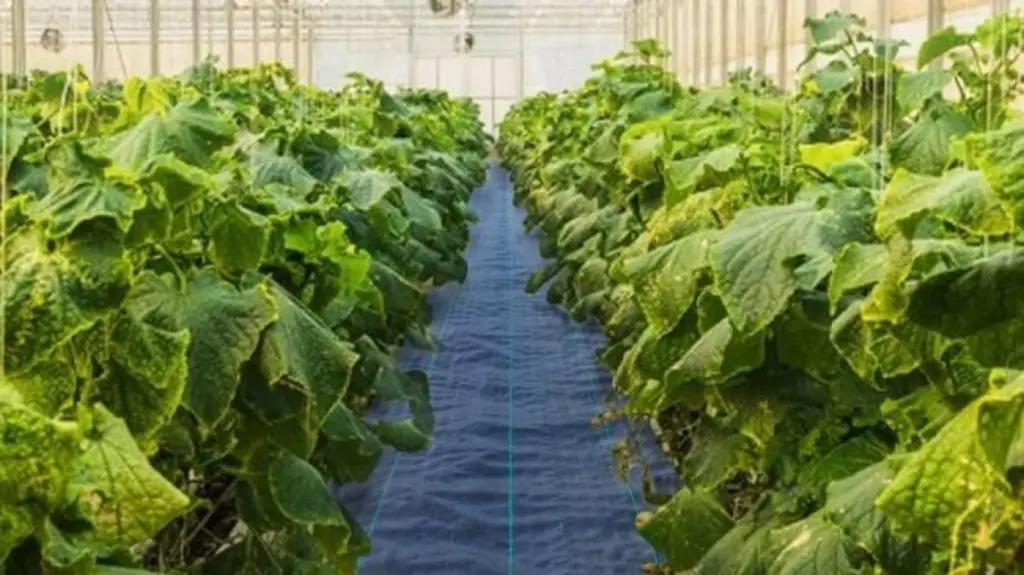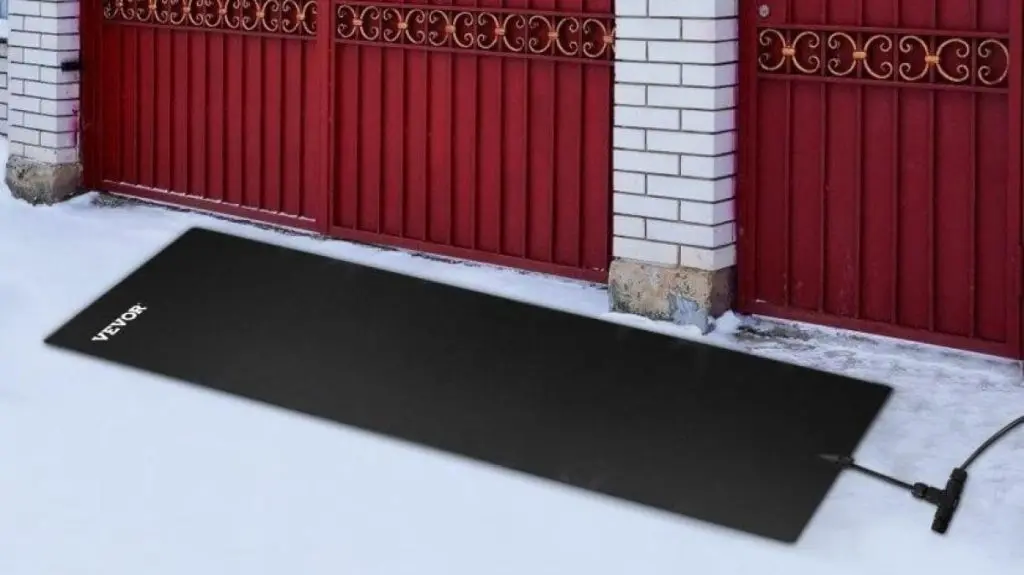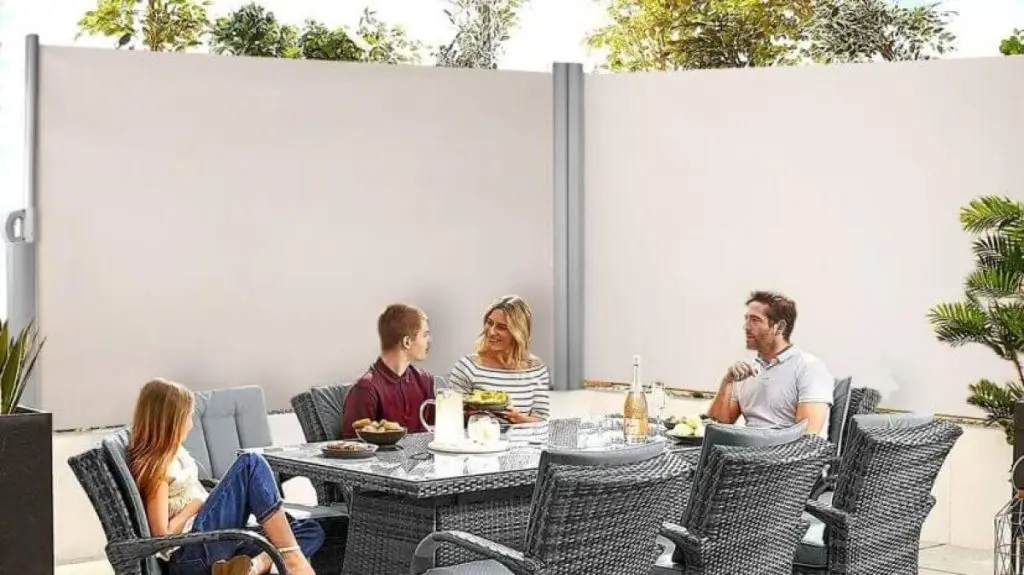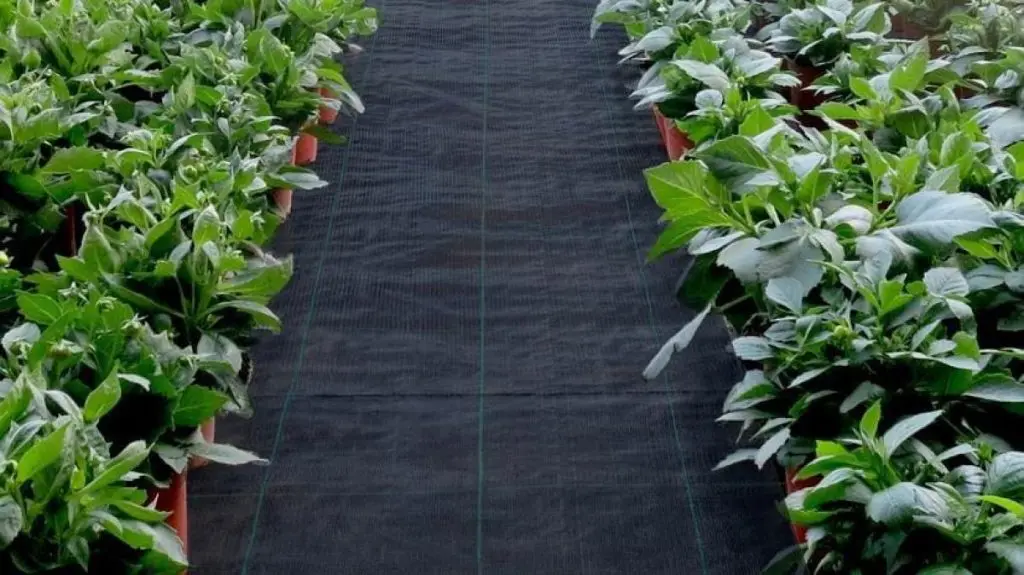What is landscape fabric?
Landscape fabric is a type of material that is used in landscaping and gardening to suppress weed growth and to help with soil erosion. It is made of a porous, woven fabric that allows water and nutrients to pass through, while blocking sunlight and preventing weed growth.
Landscape fabric can be used under mulch, rocks, or other decorative materials in flower beds and garden areas to help keep the area looking clean and well-maintained. It is also sometimes used in outdoor construction projects to stabilize soil and prevent erosion.

What is landscape fabric made of?
The most common type of landscape fabric is made from polypropylene or a polypropylene blend. Other materials that may be used to make landscape fabric include polyester, jute, and coconut fiber. Some landscape fabrics are also treated with a chemical coating to make them more resistant to pests and UV radiation.
Here are the most popular types of landscape fabric for optimal weed control: woven, non-woven, perforated and spun.
- Woven
A woven landscape fabric is a type of landscape fabric that is made by interweaving strands of synthetic or natural material to create a porous, flexible fabric. It is an ideal option for flower beds, shrubs, and trees.
- Non-woven
Non-woven landscape fabric is a type of landscape fabric that is made from a single layer of spun-bonded polypropylene or other synthetic material. Unlike woven landscape fabric, which is made by interweaving strands of material, non-woven landscape fabric is made by bonding the fibers together using heat or chemicals.
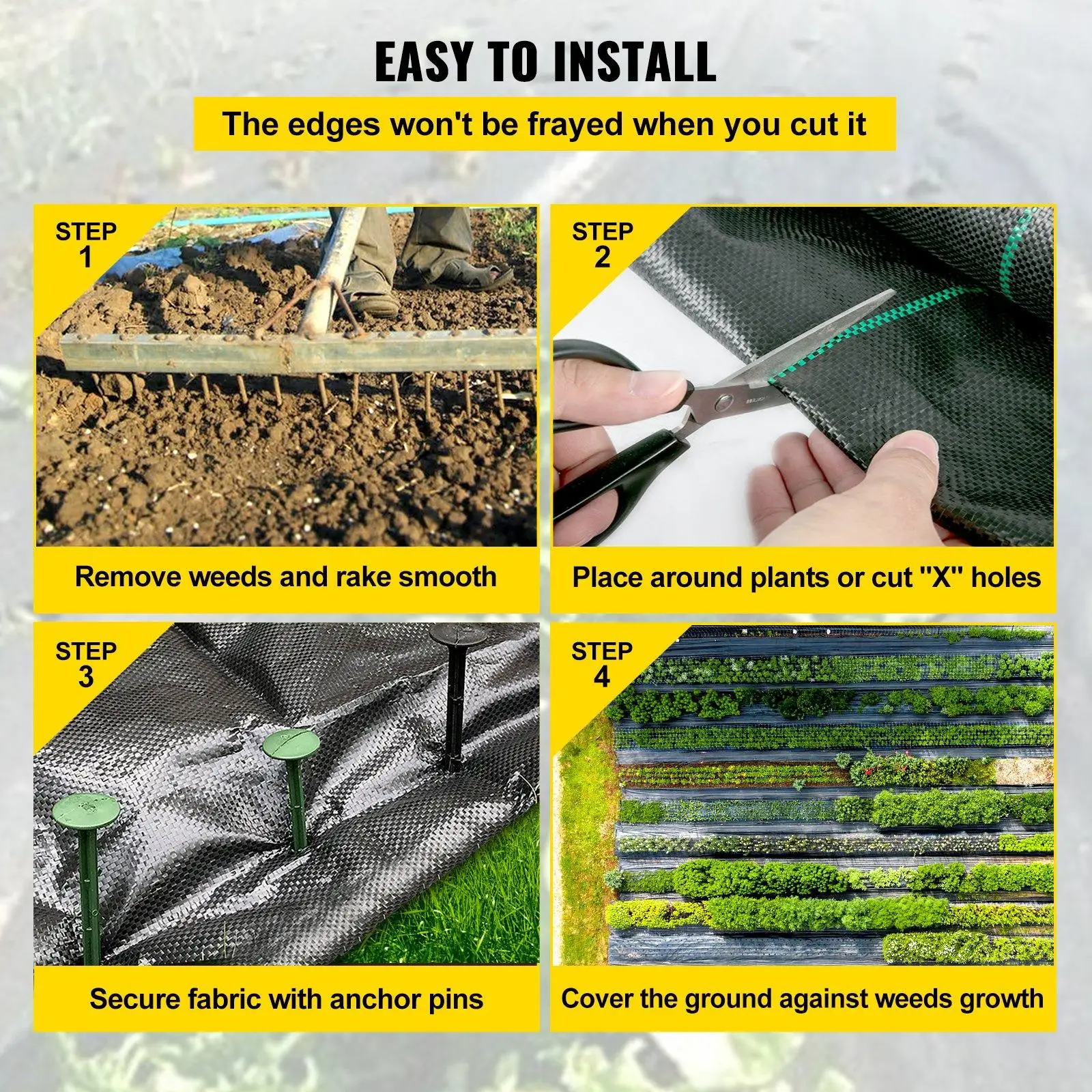
Non-woven landscape fabric is typically heavier and more durable than woven fabric, and it is often used in commercial landscaping or construction projects where a more heavy-duty fabric is needed. Like woven landscape fabric, non-woven landscape fabric is used to suppress weed growth.
It is also used to prevent small rocks from sinking especially underneath rock gardens, pathways, and mulches. Besides, the fabric makes removing the rocks easier. That said, it is not an ideal option for flower beds or vegetable gardens as it might suffocate your plants.
- Perforated
Perforated landscape fabric is a type of landscape fabric that has small holes or perforations throughout the material. These holes allow water and nutrients to pass through the fabric while still blocking sunlight and preventing weed growth.
Perforated landscape fabric is often used in landscaping and gardening projects where it is important to allow water to reach the soil and plants, but where weed growth still needs to be controlled.
It is typically used in conjunction with mulch, rocks, or other decorative materials in flower beds and garden areas to help keep the area looking clean and well-maintained. Perforated landscape fabric is typically made of a synthetic material such as polypropylene or a polypropylene blend, and it may be woven or non-woven.
- Spun
The landscape fabric, which is a type of non-woven landscape fabric made from a single layer of synthetic fibers that have been bonded together using heat or chemicals. Spun-bonded landscape fabric is typically made of polypropylene or another synthetic material and is known for its strength and durability.
It is often used in landscaping and gardening projects where a heavy-duty fabric is needed, and it is used to suppress weed growth and help with soil erosion. Like other types of landscape fabric, spun-bonded fabric is designed to allow water and nutrients to pass through while blocking sunlight and preventing weed growth.
Spun landscape fabric can be used as a physical barrier around the edges of your garden to keep out pests and invasive grass. It can also be placed under rock mulch or behind retaining walls to prevent soil and roots from getting into the cracks.
Easy tips on how to install weed barrier
To install a landscape fabric, follow these steps:
- Clear the area where you will be installing the fabric. Remove any weeds, rocks, or other debris.
- Level the soil as needed. Use a rake or hoe to smooth out the surface and remove any high or low spots.
- Lay the landscape fabric over the prepared area, making sure to overlap the edges by at least six inches.
- Secure the fabric in place using staples, pins, or another method of your choice.
- Cut holes in the fabric for any plants or other features that will be installed in the area.
- Cover the fabric with a layer of mulch, rocks, or other decorative material.
- Water the area well to help the fabric settle into place.
It is important to follow the manufacturer’s instructions when installing landscape fabric, as different brands and types of fabric may have specific installation requirements.
What are the benefits of using landscape fabric?
There are several benefits to using landscape fabric in landscaping and gardening projects:
- Suppresses weed growth: Landscape fabric blocks sunlight and prevents weeds from growing, which can save time and effort on weed control.
- Helps with soil erosion: Landscape fabric can help to stabilize soil and prevent erosion, particularly in areas with sloping or uneven terrain.
- Allows water and nutrients to pass through: Landscape fabric is porous and allows water and nutrients to reach the soil and plants, which can help to improve plant health.
- Easy to install and maintain: Landscape fabric is easy to install and requires little maintenance once it is in place.
- Long-lasting: Landscape fabric is durable and can last for several years with proper care.
Can improve the appearance of the landscape: Landscape fabric can help to keep an area looking clean and well-maintained, particularly when covered with mulch or decorative materials.
VEVOR 6.5FTx300FT Premium Woven Weed Barrier Fabric Heavy Duty
The Landscape fabric comes in a durable PP fabric. The landscape fabric measures 6.5 feet wide and 300 feet long, covering a total area of 1950 square feet.
It is designed to be a heavy-duty weed barrier that can protect your garden and flower beds from weeds, making it easier to maintain a neat vegetable garden or flower garden. Besides, it helps improve productivity and efficiency of the said area.
It also features high permeability so you can be confident that the fabric will prevent puddling of water on its surface, and the sturdy structure will prevent weeds or grass from growing through it.
In addition, it helps the soil to breathe naturally ensuring retention of nutrients and moisture. And since it is made of a black material, it provides optimal shading preventing weeds and grass from growing around the plant.
Thanks to the sturdy material, it will withstand different weather conditions, providing protection for extended periods. The landscape fabric weed barrier is easy to cut and install, making it convenient for you to customize the size and shape to fit your specific needs.
Finally, the durable weed mat fabric will effectively prevent weeds from invading your garden. It is suitable for a variety of applications including use in gardens, agriculture, and industrial settings such as greenhouses, flower beds, artificial grass, and driveways.
More Lawn & Garden <–Click It

